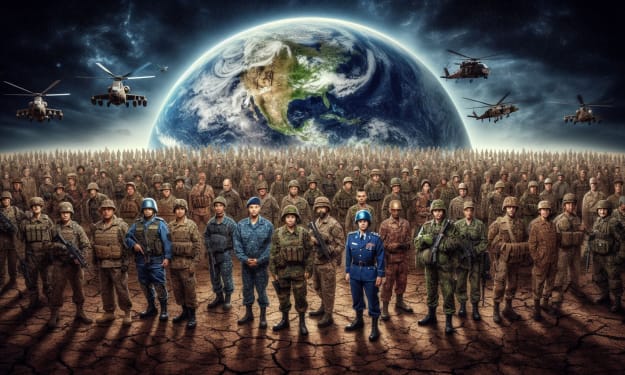The World's Most Expensive Food?
The price of steak in Venice will make your eyes water!

The Telegraph reported this week that a group of Japanese students were charged around £970 for a simple meal of steak and fish washed down with mineral water. We can only imagine their bemusement on receiving the bill, and congratulate them on having the sense to involve the police.
While Venice sinks under an estimated 20 million tourists annually and the exquisite vistas of the lagoon are blemished by gargantuan cruise ships regurgitating ever more disorientated peeps, it seems some Venice business owners are looking to harvest a little more wealth than is decent.
What is the real cost of our food, though? Who is really paying for our appetites and what consequences are we bringing down, if not on ourselves, then on our children? What's the real cost of that steak?
Lets start with the basics: land. Our appetite for beef is huge, and those animals need somewhere to live. In Central and South America, cattle ranching is one of the leading drivers behind the destruction of the rainforests. In fact, Costa Rica has lost the majority of its rainforest to slash and burn clearance to make way for cattle. Whilst the indigenous people of the area found this an effective method for their low impact farming, it is not sustainable on an industrial scale. The soil is poor; unable to support the grasslands needed for the cattle. Once it's exhausted in just a few short years, the process begins again on the next stretch of rainforest. The cattle are moved on, leaving a dry desert in their wake.
It's not just the land that they live on, though. In recent years, an area of land the size of the UK, Germany, and France combined has been cleared and used to grow soy, a major component in animal feed fed to cattle. In fact, according to the World Wide Fund for Nature, 75 percent of the 284 million tonnes of soy produced annually goes to animal feed. This, along with the cattle ranches, is contributing to the destruction of fragile ecosystems in South America that have not even been fully investigated by science. We cannot even put a price on discoveries that will never be made, species destroyed before they are recorded, and traditional lands and ways of life swept away by the West's insatiable appetite for meat.
What of the meat itself, though? What exactly are we putting in our mouths? 80 percent of antibiotics sold are being used in animal agriculture. The vast majority of these are not being used to cure sick animals, but rather farmers have discovered that administering low levels of antibiotics causes animals to put weight on more efficiently, resulting in greater profits for the farmers. Do you know why we are told to always finish a course of antibiotics? That would be because these low level doses are dangerous. They kill some bacteria, but at the expense of allowing those with greater resistance to flourish. It should therefore not surprise us that over 50 percent of ground beef contains bacteria resistant to antibiotics. If you are unlucky enough to ingest these bacteria, the resulting illness will be untreatable by modern medicine.
If that is not a high enough price, then how would you like a side serving of hormones with your beef? There are more than five hormones artificially introduced to the diets of beef cattle, again as they result in faster growth and therefore increased profits. The EU's Scientific Committee on Veterinary Measures relating to Public health has claimed that some of these hormones remain in the meat we consume and pose a risk to public health. In fact, the EU tried to ban the import of meat that contained hormones but was overruled by the World Trade Organisation. So many hormones are being pumped into these animals that, as a side effect, the ground and watercourses near these cattle ranches are contaminated by these hormones and the effect can be measured in the local fish populations. Does this matter? So what is the price being paid by the consumer of this beef? Well, a study by S.H. Swan and colleagues revealed a correlation between the amount of beef eaten by the mother and reduced fertility in their adult sons. The more beef the mother had eaten whilst pregnant drastically increased the son's chance of having a low sperm count.
When we look at the costs to our environment and health, it seems it's not just those students paying a high price for steak.





Comments
There are no comments for this story
Be the first to respond and start the conversation.